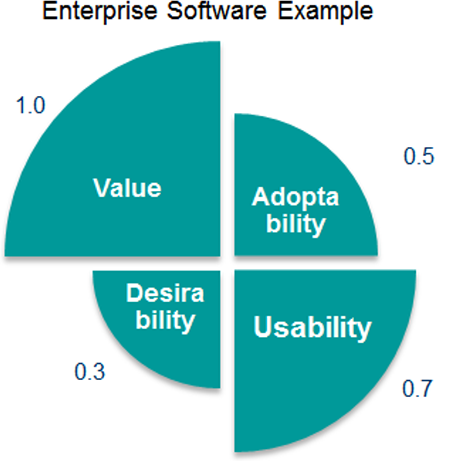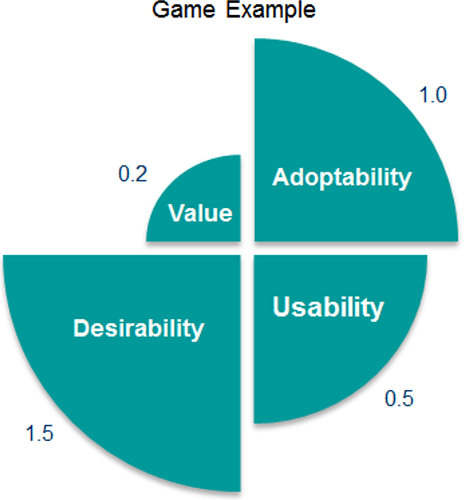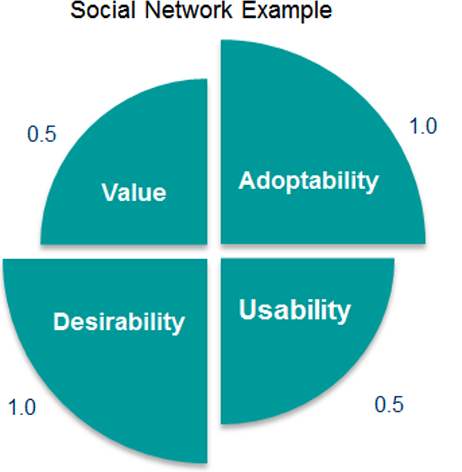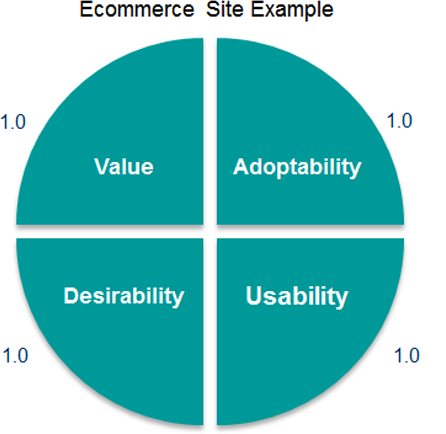Enterprise Software: It’s All About Value
For enterprise software such as accounting software, CRM solutions, or financial-analysis tools, the most important UX element is the value the product provides in relation to users’ needs. Does your product address indispensable job-related tasks? Does it provide comprehensive functionality that is well suited to users’ workflows? Does it interface well with in-house tools? Is it secure? Enterprise software meets a very practical need; therefore, value plays a key role in its design.
In addition to value, usability is, of course, a very important consideration. Users need to be able to complete their tasks with efficiency and accuracy. Otherwise, the software simply fails to deliver value.
Desirability is less important in driving the usage of enterprise software. Users do not expect to have fun using the software. They are required to use it as part of their job. Of course, making the software fun to use wouldn’t hurt, but that’s far from a key request from users. Based on past user research that I’ve conducted, corporate users often perceive fancy visual design as gimmicky. After all, they just want to complete their designated tasks in the most efficient way possible, with little distraction. Nor does adoptability play an important role, because users have no say in what software they’ll use.
Figure 1 is a diagram that shows the relative importance of the four UX elements for a hypothetical enterprise software product. The numbers indicate the weightings of the four elements. In this hypothetical example, I’ve assigned desirability a weight of 0.3; adoptability, a weight of 0.5.

Product teams should work out such weightings based on their own understanding of their product and its users. Assigning weightings is optional. You don’t need them to see the relative importance of the UX elements. However, weightings could be useful if product team members react better to numbers—especially if the team intends to create some kind of scorecard to measure a product’s success.
Games: Desirability Is the Name of the Game
Developing games is a completely different story. Unlike enterprise software, most games are intended to provide entertainment rather than practical value. Sure, there are some games that meet practical needs, but value is not a key UX element driving the usage of the majority of the games that we see today. (For example, check out the top games in the Apple App Store.) The success of games in the marketplace is all about desirability and adoptability.
However, to be playable, a game must be easy to use. Good usability is especially important for casual gamers learning new games. But usability is not nearly as important as adoptability. There are millions of games out there that are competing to get users’ attention, but only an easy-to-adopt game will find its way to prospective users. That is why it is so critical for game developers to think of ways to make the features of their games discoverable. Desirability also overshadows usability. If a game is really, really fun to play, users will tolerate or find ways to overcome poor usability.
Therefore, when designing and developing games, the first thing to do is to identify an engaging, even addictive, game concept. Next, you must implement that concept with an attractive visual design and fun user interactions. You’ll also need to figure out how to distribute the game to reach a large audience. While you must refine the user interface to support ease of use, whenever ease of use is in conflict with desirability, you’ll need to compromise on ease of use.
Figure 2 shows the relative weightings of the four UX elements for a hypothetical game.



